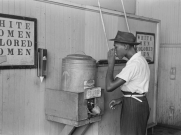Michele Kerr, a graduate of Stanford’s teacher education program and a guest author at NAS.org, has an admirable op-ed in the Washington Post today. In her piece, “The Right Way to Assess Teachers’ Performance,” she notes the backlash from teachers over being tested by student performance, as required by Obama’s Race to the Top program. She says she, and probably most teachers, would be willing to be evaluated based on students’ test scores, provided a few conditions are met. “Let’s negotiate,” she says.
Kerr proposes that:
- Teachers be assessed based on only those students with 90 percent or higher attendance.
- Teachers be allowed to remove disruptive students from their classroom on a day-to-day basis.
- Students who don't achieve "basic" proficiency in a state test be prohibited from moving forward to the next class in the progression.
- Teachers be assessed on student improvement, not an absolute standard—the so-called value-added assessment.
“Accepting these reasonable conditions might reveal that common rhetorical goals for education (everyone goes to college, algebra for eighth-graders) are, to put it bluntly, impossible,” she asserts. “So we’ll either continue the status quo at a stalemate or the states will make the tests so easy that the standards are meaningless.”
Commenting on Kerr’s article, Joanne Jacobs blogs:
Is this doable? Letting teachers kick out disruptive students would be very useful, I think. Holding back students who lack basic skills would be painful, but it would force an intense effort to teach them what they need to know. I think that would help students more than dumping them in classes they can’t understand and hoping for the Clue Fairy to touch them with her magic wand.
The conveyor belt of higher education—grade inflation, dumbing down standards, graduating students who should have failed out—begins in K-12, and it’s time to find out, as Kerr puts it, “how many students are failing because they don't attend class, how many students score ‘below basic’ on the algebra test three years in a row, how many students fail all tests because they read at a fourth-grade level.” Is our “educational rhetoric” (such as the idea that all students should be on the college track) merely a “pipe dream”? Kerr asks. If so, we need to establish expectations based in reality.
After graduating from Stanford (she recounts the story of her harrowing year in the education program in “An Opinionated Pragmatist Survives Stanford”), Kerr taught math, English, and social science at a high school in
NAS is a spectator of the Race to the Top. This spring we wrote about RttT here and here and here. We’ve also written about a dozen articles on the recent push to double the size of college enrollment. They are listed here.













